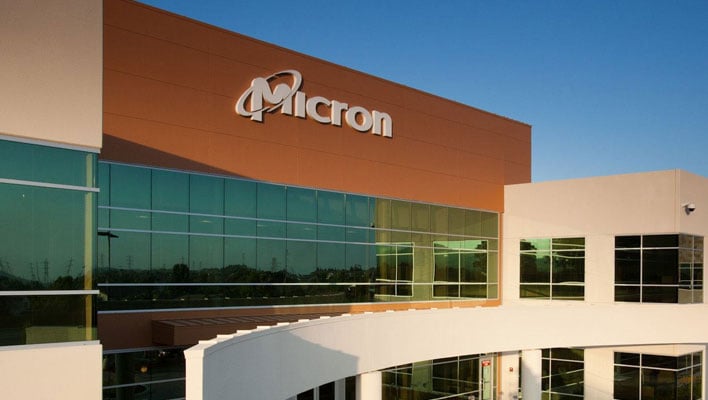Micron Challenges Laws Of Physics To A Fistfight With Cutting-Edge 1-Beta DRAM

Micron on Tuesday announced it has begun shipping qualification samples of its 1-beta DRAM technology to smartphone makers and chipset partners. In the process (pun intended), Micron is calling out the laws of physics for a showdown with its sophisticated lithography and nano-manufacturing, which have enabled the industry's first 1-beta node.
As explained by Micron, DRAM scaling up to this point has largely been focused on delivering more and faster memory per square millimeter of semiconductor space. This in turn means continuously shrinking circuits to enable cramming billions of memory cells on chips that around the size of a human fingernail. As chips have grown increasingly smaller, companies like Micron have been "challenging the laws of physics" with each new node. It also means making big investments, like the $100 billion Micron will spend to build the largest chip fab in the US.
"While the industry has begun to shift to a new tool that uses extreme ultraviolet light to overcome these technical challenges, Micron has tapped into its proven leading-edge nano-manufacturing and lithography prowess to bypass this still emergent technology. Doing so involves applying the company’s proprietary, advanced multi-patterning techniques and immersion capabilities to pattern these minuscule features with the highest precision," Micron explains.
Micron says this is necessary in order to continuing stuffing more memory into increasingly compact form factors and devices, including smartphones and IoT gadgets. And specifically as it applies to 1-beta DRAM, Micron says it will provide the foundation for a more interconnected and sustainable world.
"Micron’s 1β DRAM node provides a versatile foundation to power advancements in a connected world that needs fast, ubiquitous, energy-efficient memory to fuel digitization, optimization and automation. The high-density, low-power memory fabricated on 1β enables more energy-efficient flow of data between data-hungry smart things, systems and applications, and more intelligence from edge to cloud," Micron says.
The company said it achieved mass production readiness for its 1-beta DRAM, which will manifest first in low-power double data rate 5X (LPDDR5X) mobile memory solutions. These chips will be capable of top speeds hitting 8.5 gigabits per second (Gbps). Incidentally, Samsung last month announced the validation of its 8.5Gbps LPDDR5X DRAM for use on Snapdragon mobile platforms.
Micron is also claiming a 15 percent power efficiency improvement with its 1-beta DRAM compared to its 1-alpha DRAM, along with a more than 35 percent bit density improvement with a 16Gb per die capacity.
"The launch of our 1-beta DRAM signals yet another leap forward for memory innovation, brought to life by our proprietary multi-patterning lithography in combination with leading-edge process technology and advanced materials capabilities," said Scott DeBoer, executive vice president of technology and products at Micron.
While there is plenty to geek out about from a technical standpoint, tangible benefits that consumers can eventually expect include enhanced smartphone camera capabilities, Micron says. Specifically, the company claims its 1-beta DRAM will lead to faster and clearer night mode and portrait photos, as well as shake-free 8K video recording and intuitive in-phone video editing capabilities.
It's not mentioned when actual products ship with 1-beta DRAM. However, now that Micron is sampling QS chips to clients, we anticipate seeing smartphones and other devices with 1-beta DRAM technology in the first half of next year.

